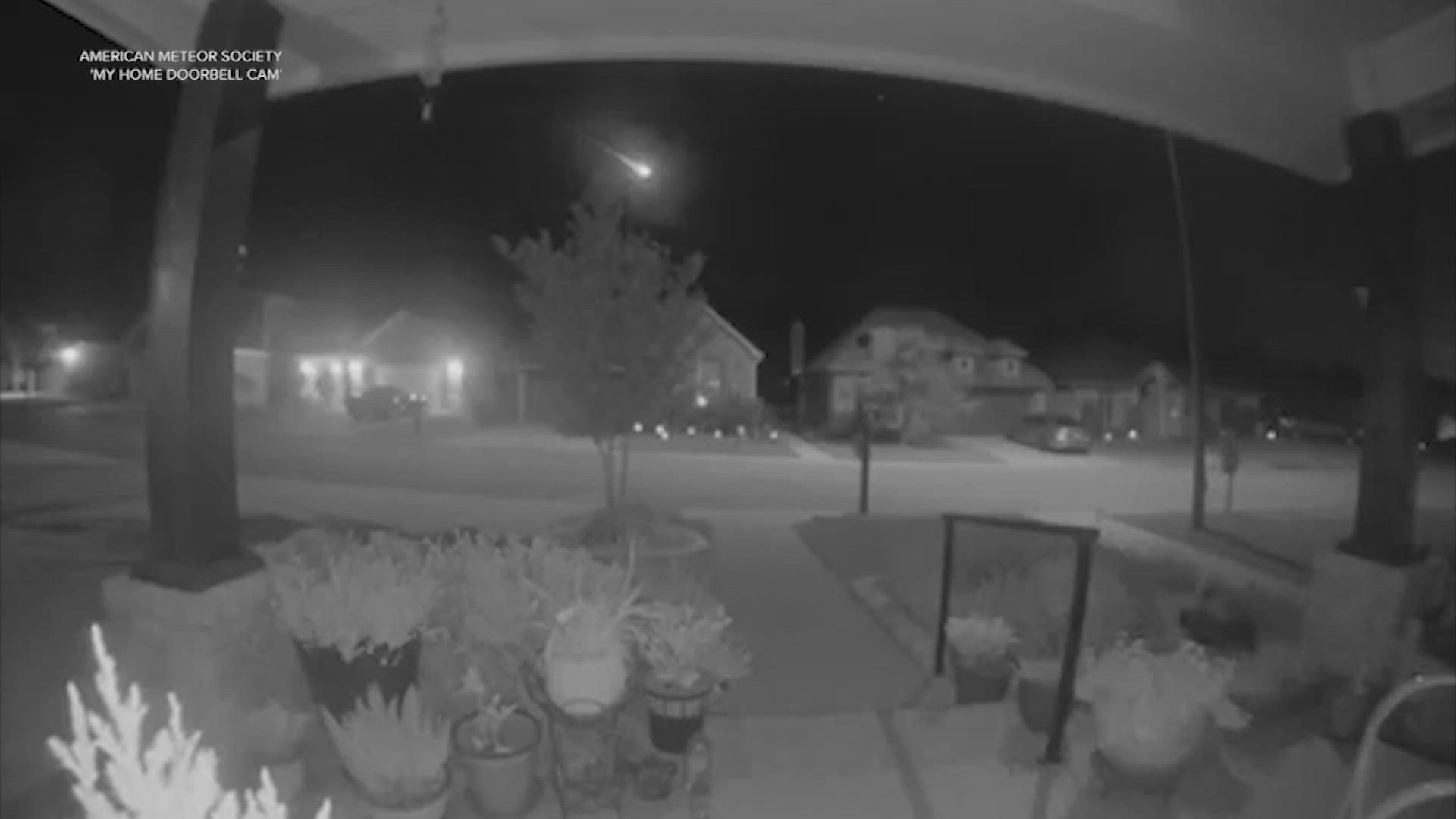HOUSTON — What exactly was that lighting up the sky over Texas on Sunday night?
Several people were talking about it on social media and some even captured it on video.
According to the American Meteor Society, more than 200 reports of a fireball came on Sunday night. The AMS said it happened at 10:24 p.m. and was visible in Texas, Louisiana and Oklahoma.
Looking at their map, the biggest concentration of reports came from Texas, primarily the Houston, Dallas-Fort Worth, Austin and San Antonio areas, but some in Corpus Christi and even further south.
There are three active meteor showers right now – the Southern Delta Aquariids, which peaks on July 29 and 30, the Alpha Capricornids, which peaks on July 30 and 31 and the Perseids, which peaks on August 11 and 12.
At the Houston Museum of Natural Science, Dr. Carolyn Sumners had some answers. She's the vice president of astronomy and physics at HMNS.
She said there's a chance that the pieces could fall to Earth since it appears that what was seen was a meteoroid becoming a meteor.
“If you saw it pass overhead as opposed to in the distance, that makes you more likely to be under one and have one fall on you. Chances are very unlikely there’s a meteorite in your front yard. But there could easily be a meteorite in somebody’s front yard,” she said. “We saw a meteoroid becoming a meteor.”
Sumners said the phenomenon happens all the time and it really just comes down to where they happen and if people are able to see it.
She said it's important to search for the pieces that might have fallen to the ground, which are called meteorites.
“Each piece is a messenger from space about where it came from, when it was made, what it’s made of. And this is data we desperately need to collect," she said.
Sumners said it appears that it entered the atmosphere around Cistern, Texas, and broke up near Austin.
“The Austin area is interesting because of where it went across ... and what you want to do is look for the person who saw the meteor the most overhead," Sumners said.
Did you see it? Or maybe your home surveillance captured images. If so, share photos and videos with us, by uploading them to us through the Near Me feature of our news app.

